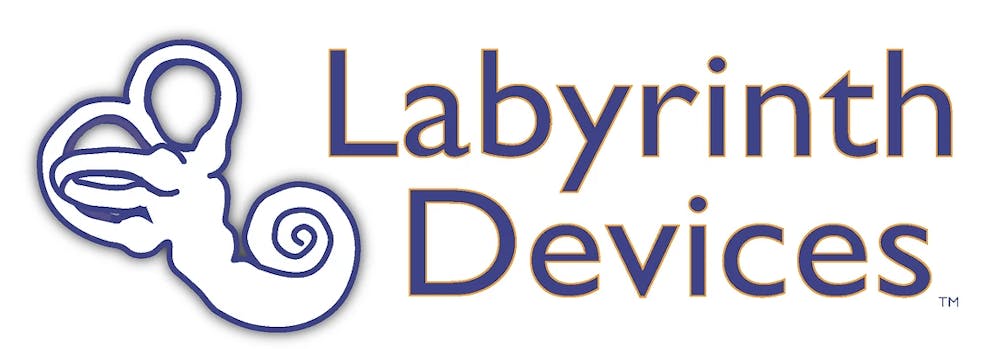Editor’s Note: This article reflects Meg Chow speaking about her personal experiences as a researcher in the field. Chow is not speaking on behalf of Labyrinth Devices or MED-EL; the views expressed are hers alone.
Labyrinth Devices, a medical device startup based in Baltimore, is the sponsor of an early clinical trial of implants for those suffering from ailments of the vestibular labyrinth in the inner ear, a complex and dynamic system made up of twisting canals and end organs that helps to maintain the body’s sense of balance and vestibulo-ocular reflex.
The company has roots at Hopkins, founded in 2008 by Dr. Charles Della Santina, an otologist and neurotologic surgeon at the Hopkins Hospital. The News-Letter spoke with Meg Chow, a Hopkins alum who recently joined the company, about her experience translating research methods and findings into practical applications. Chow completed both her bachelor’s and doctorate in Biomedical Engineering at Hopkins, where she worked with the Vestibular Neuroengineering Lab as part of her graduate studies.
Chow explained that Hopkins is currently the only center implanting the Labyrinth Devices implant, which ten patients have received so far, but she hopes that the research will continue to expand in scope.
“We want to make this a multi-center trial,” she said. “So we are looking into how we can expand into different centers around the country.”
Labyrinth Devices partnered with MED-EL, a company that offers implantable and non-implantable hearing loss solutions, to develop a multichannel vestibular implant (MVI). With over 2,200 employees and 30 office locations worldwide, MED-EL can handle many of the larger-scale processes including manufacturing, commercialization, quality control and legal matters.
The entrepreneurial success of Labyrinth Devices is built on more than a decade of research and development.
Chow explained that the MVI prosthesis helps those with vestibular dysfunction, which can arise from a variety of causes including genetic abnormalities, infections and toxic effects of a class of antibiotics called aminoglycosides.
The device consists of electrodes that are implanted into the inner ear and which use gyroscopes to convert head motion into specific degrees of electrical pulses that help stabilize the subject’s vestibular senses.
The results from trialing the device were illuminating, according to Chow.
“The initial proposal was that the subjects would wear [the implant] for eight weeks, but all of them have requested to use the device for as long as they can,” she said. “None of them have requested to stop using them.”
The device comes at a much-needed point in medicine. The disorder that Labyrinth Devices aims to solve is not a small one — Chow explained how around 1.8 million people have experienced bilateral vestibular loss, whose symptoms prevent subjects from walking properly or seeing with any degree of visual acuity.
Chow discussed the strategies and tools that are used to assess the efficacy of the MVI.
“We are building custom goggle sets that can measure both eyes in all three dimensions, ” she said. “We also use an automated head impulse test, where there’s a motor and a bite block, that allows us to move the head more consistently while we are testing the eye movements to make sure that we are delivering something that is driving the vestibular system in the way we think it is.”
Chow noted one limitation of the current technology – the implants, which target the three semicircular canals, tiny tubes in the inner ear that sense head rotations through the movement of endolymph within, do not fully account for the changes in vestibular sensitivity associated with linear acceleration and changes in gravity.
Based on the results of her research as a graduate student, Chow sees the addition of electrodes as an important avenue for future study.
“There are three semicircular canals, and there are two otolith end organs, and right now we aren’t delivering electrical signals to the utricle or saccule [the two end-organs] at all,” Chow said. “Can we deliver information that we can’t normally deliver using just the three semicircular canals?”
Corrections: A previous version of this article mischaracterized Chow’s experiences working for Labyrinth Devices and the size of the company.
A previous version of this article incorrectly suggested that Labyrinth Devices’ MVI prosthesis is already on the market.
A previous version of this article incorrectly suggested that there are no other companies developing goggles that measure three-dimensional movements of the eyes.
A previous version of this article incorrectly stated that future clinical trials of the device will involve adding additional electrodes.
The original headline of this article “Labyrinth Devices develops implant for patients with vestibular dysfunction” incorrectly implied that the MVI was developed solely by Labyrinth Devices. The MVI was jointly developed by Labyrinth Devices and MED-EL based on the research performed by the Johns Hopkins Vestibular Neuroengineering Lab.
The News-Letter regrets these errors.





